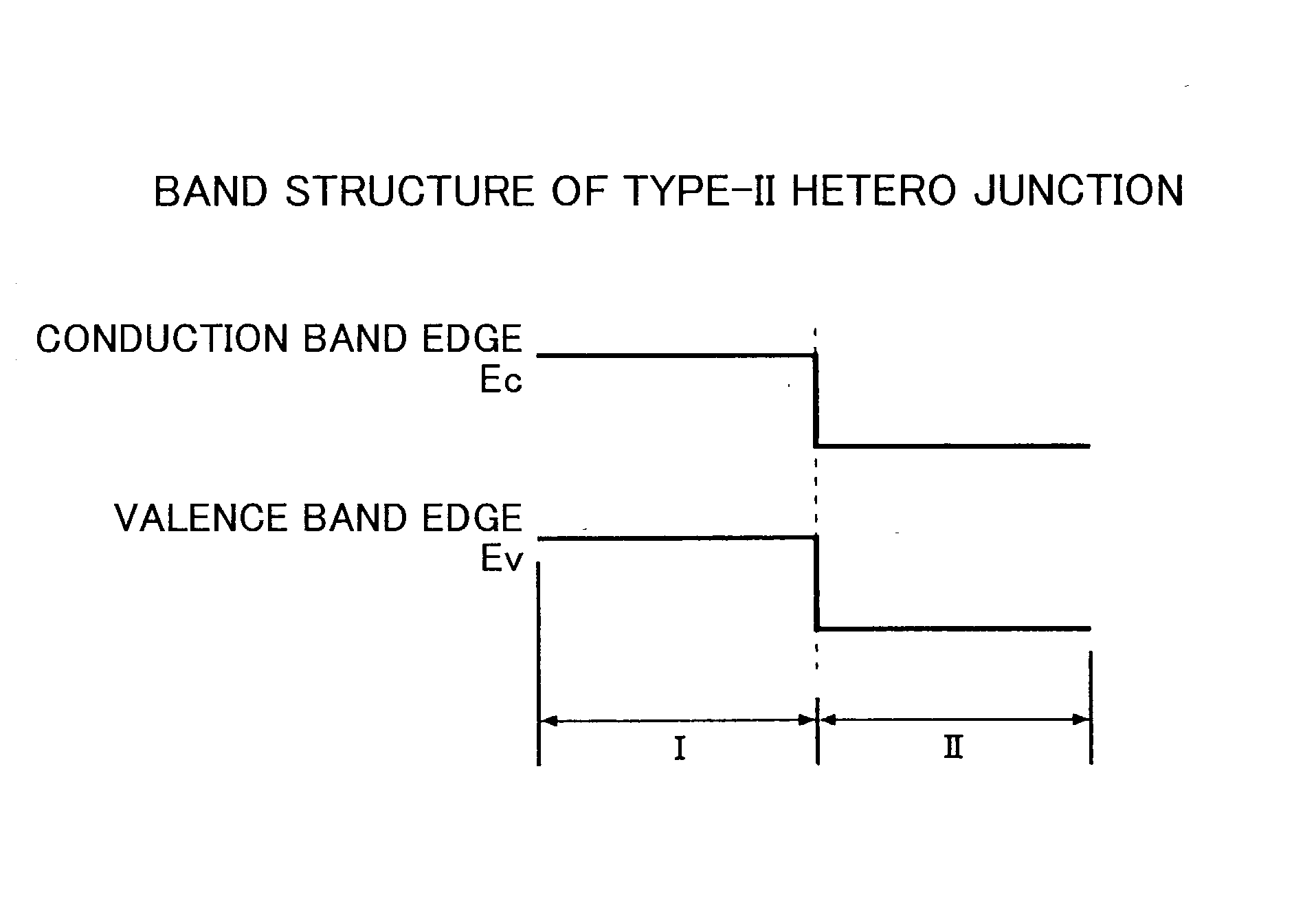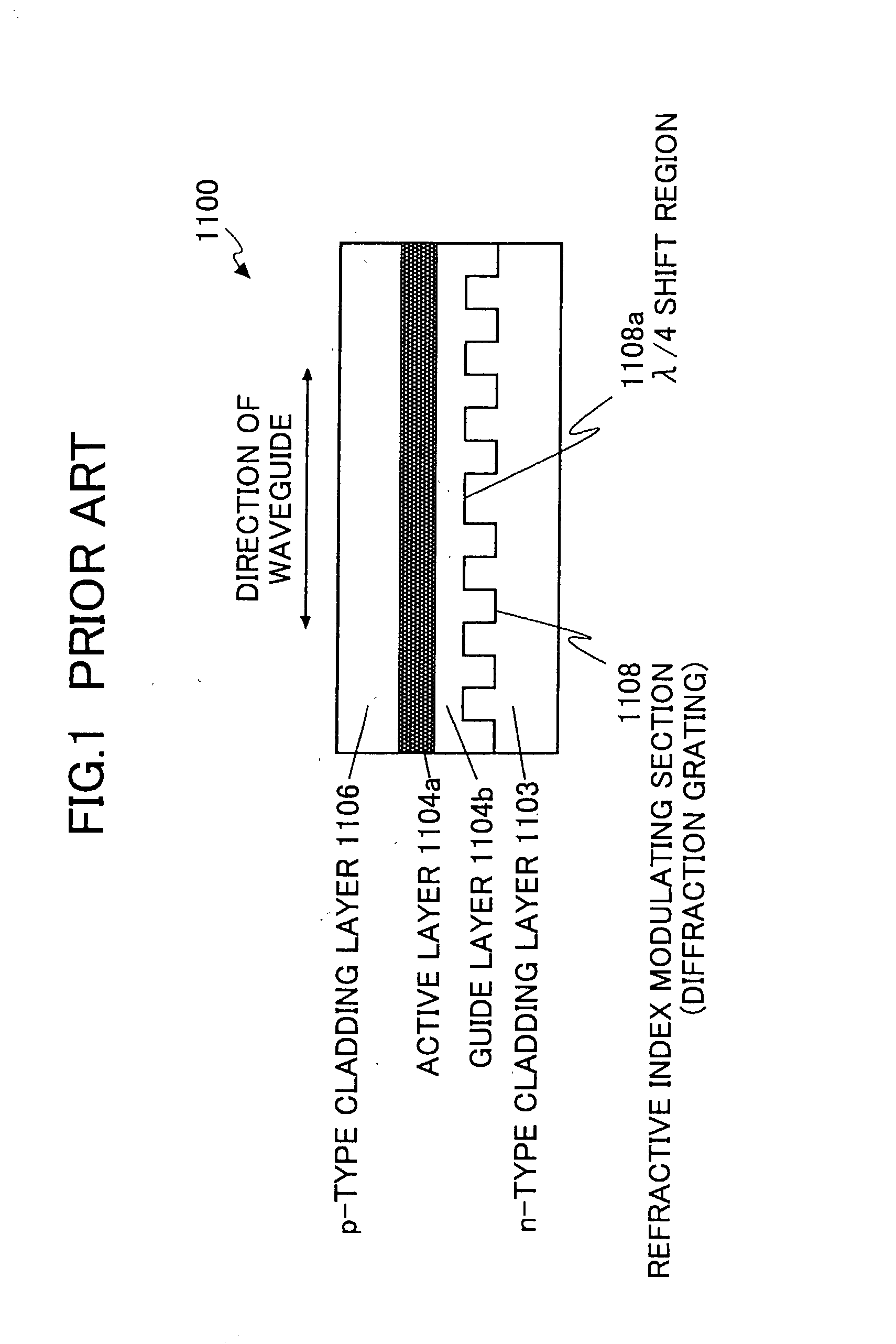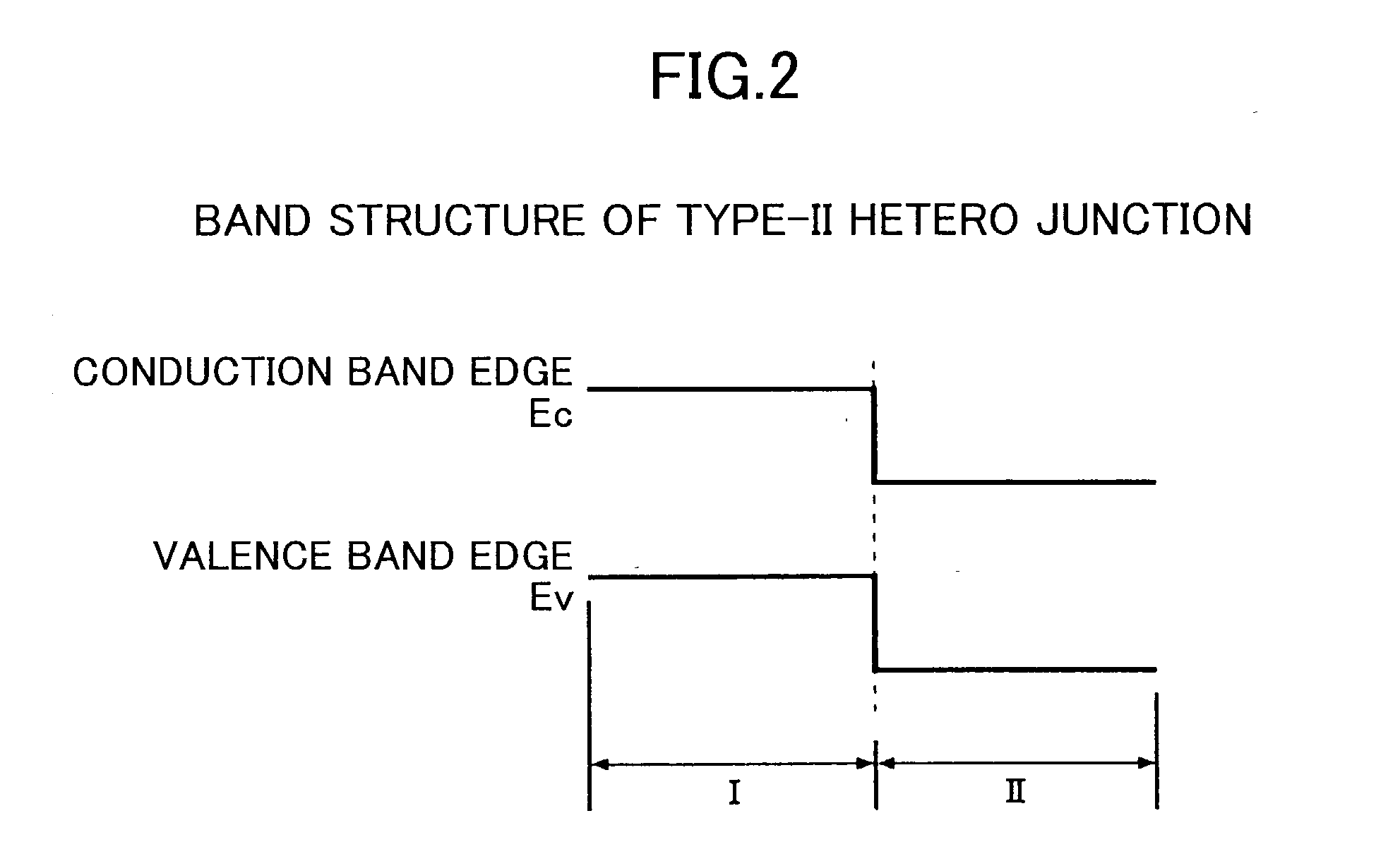Laser diode
a laser diode and diode technology, applied in the field of laser diodes, can solve the problems of weak reflection return light, difficult to achieve high light-emission efficiency, and deterioration of single wavelength characteristi
- Summary
- Abstract
- Description
- Claims
- Application Information
AI Technical Summary
Benefits of technology
Problems solved by technology
Method used
Image
Examples
first embodiment
[0052] First Embodiment
[0053] FIGS. 4 through 6 illustrate a gain-coupled DFB laser 100 according to the first embodiment of the invention. In the first embodiment, the gain-coupled DFB laser 100 is fabricated on an indium phosphide (InP) substrate and oscillates at 1.3 .mu.m (microns) region.
[0054] To define type-II hetero junction in the active layer, bulk crystal of antimony compound semiconductor material is used; however, any other materials that can define a type-II band structure can also be used.
[0055] FIG. 4A is a cross-sectional view of the gain-coupled DFB laser 100 taken along a plane perpendicular to the longitudinal axis of waveguide (i.e, the active layer), and FIG. 4B is a cross-sectional view of the active layer 104a of the gain-coupled DFB laser 100 taken along the longitudinal axis of the waveguide.
[0056] In FIG. 4A, the gain-coupled DFB laser 100 is fabricated on an n-type InP substrate 101 doped with n-type impurities. An n-type InP cladding layer 102 with a thi...
second embodiment
[0076] Second Embodiment
[0077] FIG. 7A and FIG. 7B illustrate a gain-coupled DFB laser 200 according to the second embodiment of the invention. Type-II hetero junction of bulk crystals of homogeneous semiconductors explained in the first embodiment is applicable to a SQW (strained quantum well) structure or a MQW (multiple quantum well) structure. Accordingly, in the second embodiment, a gain-coupled DFB laser diode 200 has an active layer with an MQW structure including an InGaAsP quantum well that has a lattice constant matched with the InP substrate.
[0078] FIG. 7A is a cross-sectional view of the gain-coupled DFB laser 200 taken along the longitudinal axis of waveguide, and FIG. 7B is an enlarged view of the MQW structure having type-II hetero junction. The same elements as those shown in the first embodiment are denoted by the same numerical references, and explanation for them will be omitted.
[0079] The gain-coupled DFB laser 200 has a core 204 that includes an active layer 204...
PUM
 Login to View More
Login to View More Abstract
Description
Claims
Application Information
 Login to View More
Login to View More - R&D
- Intellectual Property
- Life Sciences
- Materials
- Tech Scout
- Unparalleled Data Quality
- Higher Quality Content
- 60% Fewer Hallucinations
Browse by: Latest US Patents, China's latest patents, Technical Efficacy Thesaurus, Application Domain, Technology Topic, Popular Technical Reports.
© 2025 PatSnap. All rights reserved.Legal|Privacy policy|Modern Slavery Act Transparency Statement|Sitemap|About US| Contact US: help@patsnap.com



